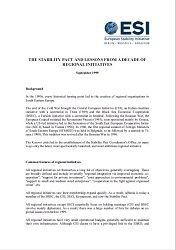THE DIFFERENCE LEADERSHIP MAKES. Lessons from Croatia’s EU accession process
THE DIFFERENCE LEADERSHIP MAKES. Lessons from Croatia’s EU accession process
Author(s): Author Not Specified
Subject(s): Transformation Period (1990 - 2010), EU-Accession / EU-DEvelopment
Published by: ESI – European Stability Initiative
Keywords: Croatia's EU-accession; Franjo Tudjman; ICTY; HDZ; Stipe Mesic;
Summary/Abstract: In the end it seemed almost inevitable. Croatia submitted its EU membership application to the Greek EU presidency in early 2003. At a referendum in January 2012 two thirds of Croatian voters supported their country’s accession to the European Union as its 28th member. The referendum came after national elections in December 2011 in which all of the main political parties had backed EU membership. Although some observers noted that less than half of all eligible voters participated in the referendum, given the large number of “dead souls” in the voting registry and the fact that many Croatians living abroad did not vote, the percentage of resident voters who participated appears to have been above 61 per cent. Turnout was thus considerably higher than in Hungary (46 per cent) and comparable to Slovenia (60 per cent) and Poland (59 per cent). The January 2012 referendum concluded a decade in which successive Croatian governments had all assumed that there was no credible alternative to meeting the conditions put forward by the EU to become a full member. || But there was nothing inevitable about Croatia’s evolution: it took significant political leadership, as well as courage and perseverance, to repudiate the values and policies of the 1990s. It also took, at key moments during this period, smart EU interventions. The Croatian experience, as well as the lessons it holds for the rest of the Western Balkans, is worth exploring in more detail.
Series: ESI Discussion Papers
- Page Count: 8
- Publication Year: 2014
- Language: English
- Content File-PDF

